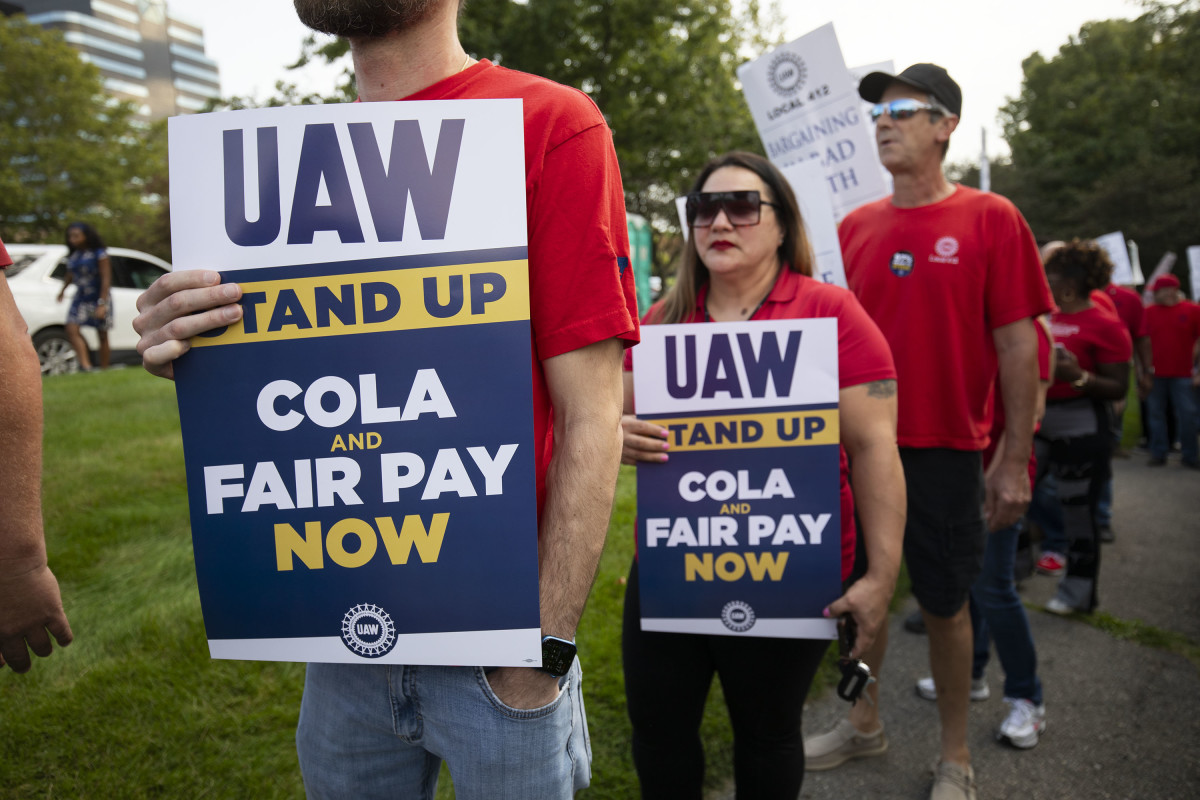
Jeep maker Stellantis has reached a tentative contract agreement with the United Auto Workers union that follows a template set earlier this week by Ford, the Associated Press reported Saturday (Oct. 28).
The agreement could end a six-week strike by more than 14,000 workers at Stellantis (STLA) -) assembly plants in Michigan and Ohio, and at parts warehouses across the nation. Stellantis operates the Chrysler and Jeep brands in the United States and Canada. The agreement affects some 43,000 workers.
The contract, which still has to be ratified by members, leaves only General Motors (GM) -) without a contract with the union. But news reports say the two sides are negotiating.
Related: My scariest drive ever left me thrilled about a future with electric cars
Like workers at Ford Motor Co. (F) -), the strikers at Stellantis are expected to take down their picket lines and start returning to work in the coming days, before 43,000 union members vote.
The people, who asked not to be identified because they are not authorized to speak publicly about the talks, said most of the main points of the deal at Ford will carry over to Stellantis, the AP said.
Contract provisions mean workers make more
The Ford pact includes 25% in general wage increases over the next four-and-a-half years for top assembly plant workers, with 11% coming once the deal is ratified. Workers also will get cost-of-living pay that would bring the raises to over 30%, with top assembly plant workers making more than $40 per hour. At Stellantis, top-scale workers now make around $31 per hour.
Like the Ford contract, the Stellantis deal would run through April 30, 2028.
The deal includes a new vehicle for a now-idled factory in Belvidere, Ill., which the company had planned to close.
Bruce Baumhower, president of the local union at a large Stellantis Jeep factory in Toledo, Ohio, that has been on strike since September, said he expects workers will vote to approve the deal because of the pay raises above 30% and a large raise immediately.
“Eleven percent is right on the hood,” he said. “It’s a historic agreement as far as I’m concerned.”
The pay raises will probably force automakers to raise prices on their vehicles.
John Lawler, Ford's chief financial officer, told reporters on Oct. 26 that the settlement will add $850-to-$900 per vehicle in higher labor costs.
The Ford agreement (and, presumably the Stellantis agreement) reverses concessions the union agreed to in a series of contracts since 2007, when GM and the former Chrysler were skidding toward bankruptcy, and Ford was mortgaging assets to stay afloat. But it is still less than the 40% pay hike, 32-hour-work week and return of defined benefit pensions the UAW initially sought.
Auto companies are healthier now
The companies are collectively in a better position now, though they have all stated that excessive pay increases would hamstring their ability to compete in coming years against lower-cost manufacturers, including Tesla (TSLA) -), the leading seller of electric vehicles, and Toyota (TM) -) and Honda Motor (HMC) -).
The strike, which was slowly expanded, cost Ford at least $1.3 billion in earnings. Stellantis has not quantified its losses.
The UAW started to strike the companies on Sept. 15 after months of negotiations.
The strike has hit the stocks of all three companies. Ford fell 21% since Sept. 15. GM is down 19.8%, and Stellantis has dropped 6.3%.
Shares of all three companies sold off on Friday. Ford’s stock fell 12% following its third-quarter earnings report Thursday evening that fell short of analysts’ expectations.
For the year, Ford is down 14.4%, with GM down 19.1%. Stellantis, however, is up 27%.







